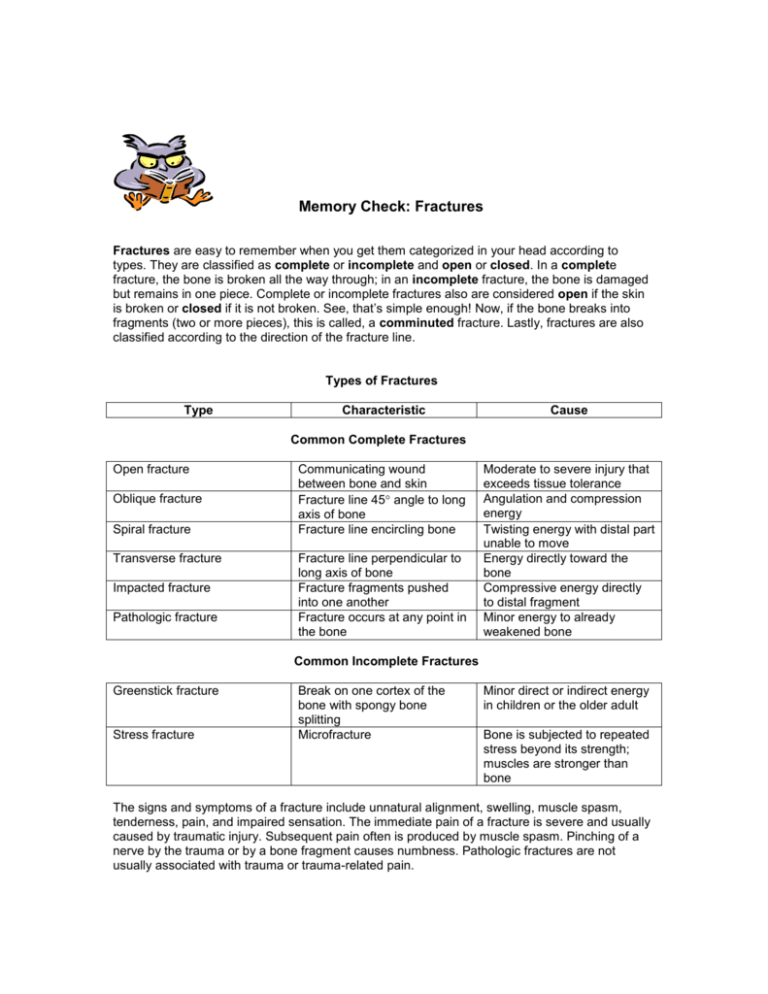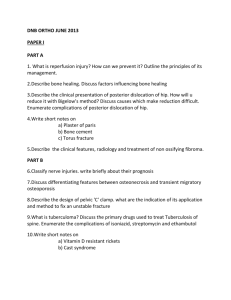Memory Check: Fractures
advertisement

Memory Check: Fractures Fractures are easy to remember when you get them categorized in your head according to types. They are classified as complete or incomplete and open or closed. In a complete fracture, the bone is broken all the way through; in an incomplete fracture, the bone is damaged but remains in one piece. Complete or incomplete fractures also are considered open if the skin is broken or closed if it is not broken. See, that’s simple enough! Now, if the bone breaks into fragments (two or more pieces), this is called, a comminuted fracture. Lastly, fractures are also classified according to the direction of the fracture line. Types of Fractures Type Characteristic Cause Common Complete Fractures Open fracture Oblique fracture Spiral fracture Transverse fracture Impacted fracture Pathologic fracture Communicating wound between bone and skin Fracture line 45 angle to long axis of bone Fracture line encircling bone Fracture line perpendicular to long axis of bone Fracture fragments pushed into one another Fracture occurs at any point in the bone Moderate to severe injury that exceeds tissue tolerance Angulation and compression energy Twisting energy with distal part unable to move Energy directly toward the bone Compressive energy directly to distal fragment Minor energy to already weakened bone Common Incomplete Fractures Greenstick fracture Stress fracture Break on one cortex of the bone with spongy bone splitting Microfracture Minor direct or indirect energy in children or the older adult Bone is subjected to repeated stress beyond its strength; muscles are stronger than bone The signs and symptoms of a fracture include unnatural alignment, swelling, muscle spasm, tenderness, pain, and impaired sensation. The immediate pain of a fracture is severe and usually caused by traumatic injury. Subsequent pain often is produced by muscle spasm. Pinching of a nerve by the trauma or by a bone fragment causes numbness. Pathologic fractures are not usually associated with trauma or trauma-related pain. Stress fractures are painful because of accelerated remodeling and are usually relieved by rest. Range of motion (ROM) in the joint is limited, and movement may evoke audible clicking sounds or crepitus. Fracture treatment involves realignment of the bone fragments to their normal or anatomic position and holding the fragments in place so that bone union can occur. Several methods are available to reduce (align) a fracture – including closed manipulation, traction, and open surgical reduction. Splints and plaster casts are used to immobilize and hold a reduction in place. Improper reduction or immobilization of a fractured bone may result in nonunion, delayed union, or malunion. MemChk.M/S.MdP








